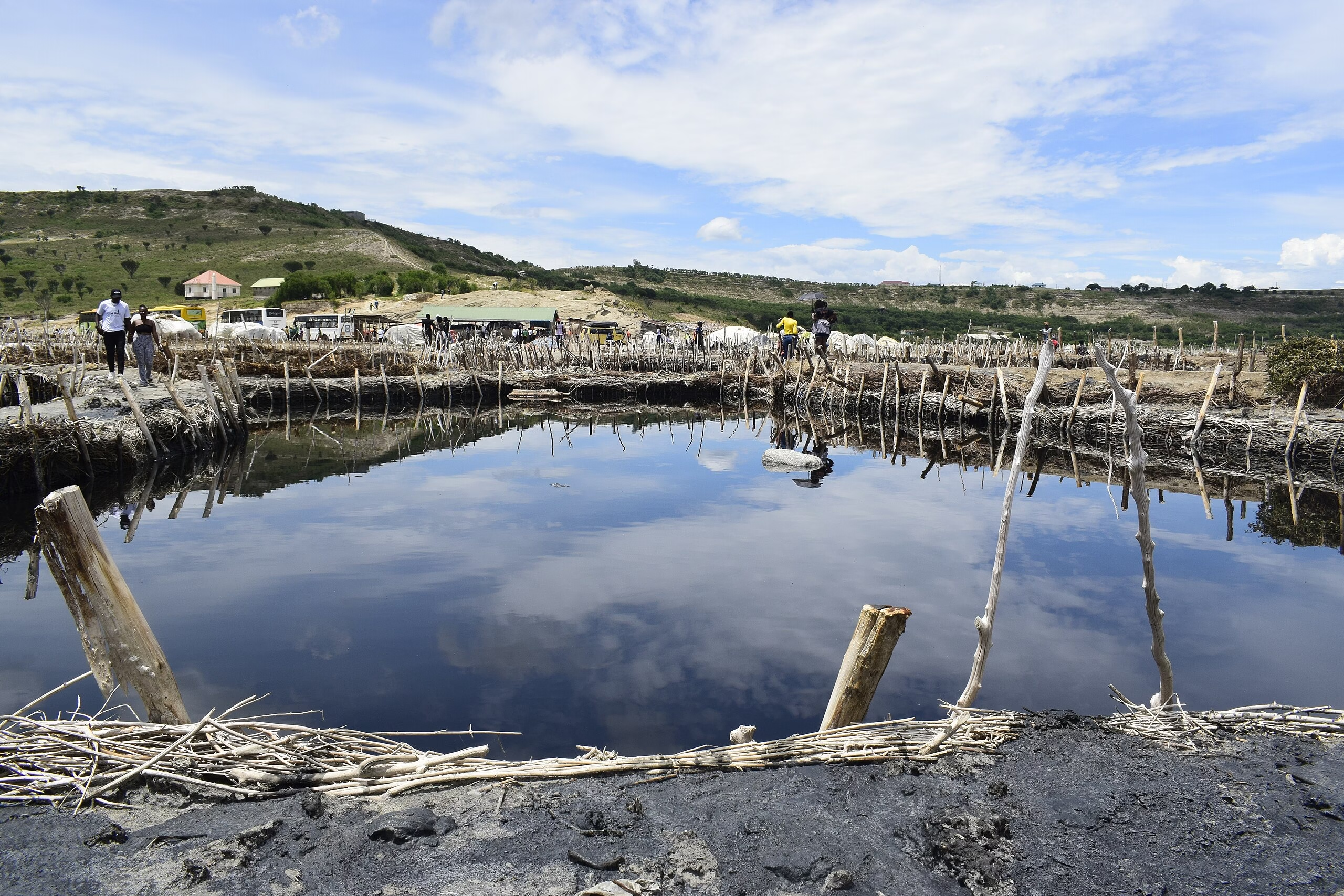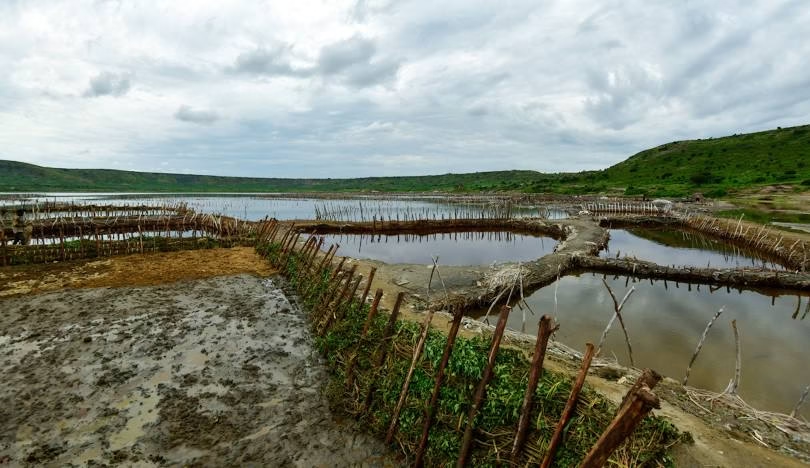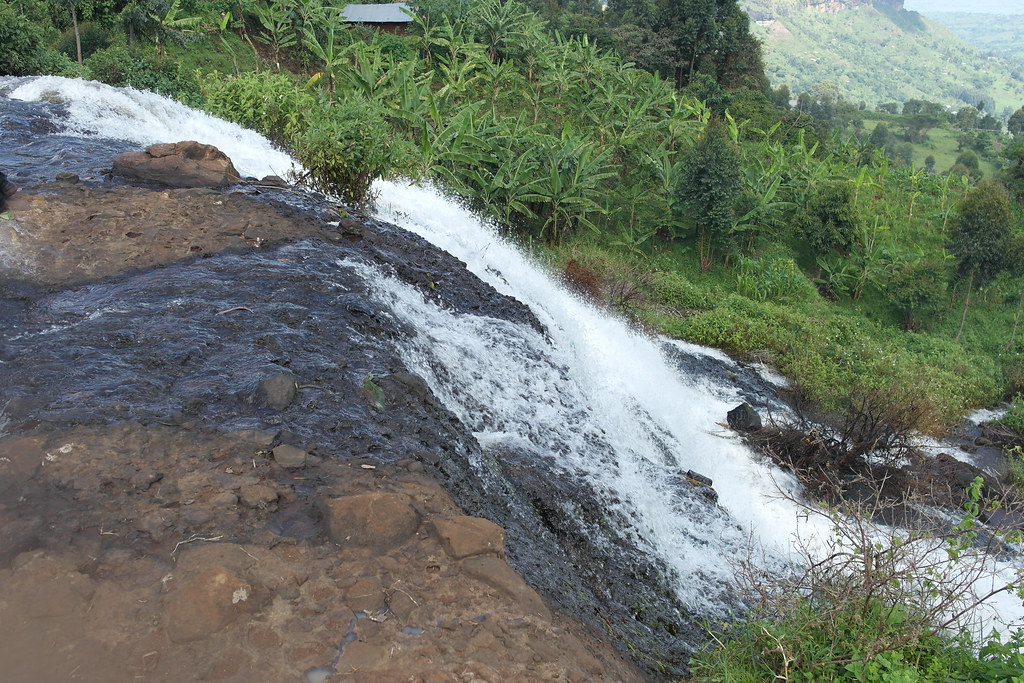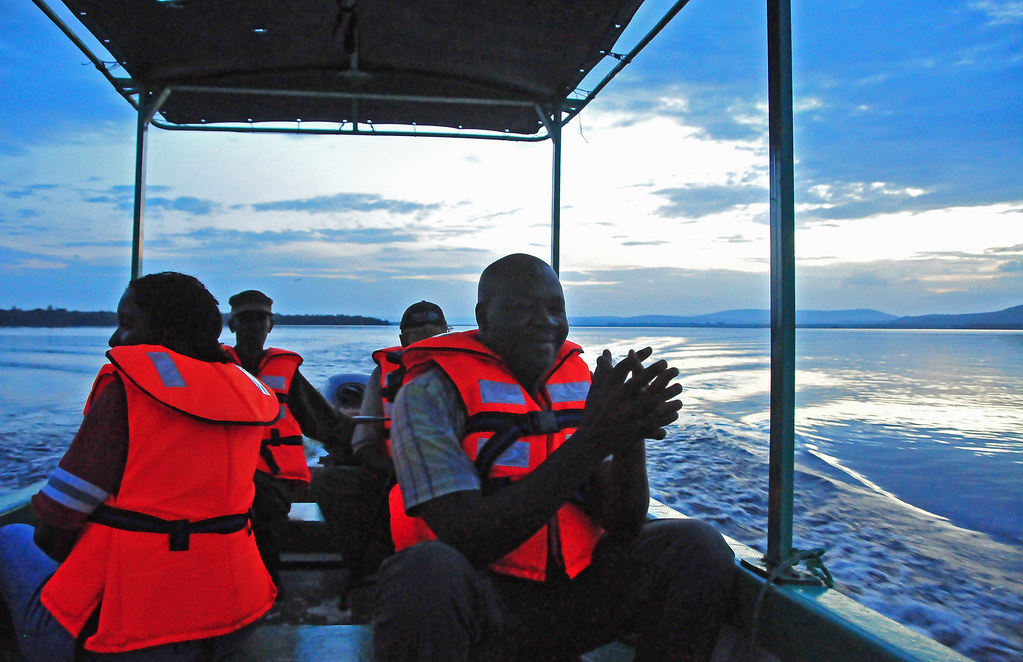
Salt Mining in Lake Katwe
Salt Mining in Lake Katwe
A Story of Resilience and Rich Heritage on Lake Katwe

There’s a quiet poetry in the shimmering waters of Lake Katwe, where the sun kisses the surface and salt crystals glisten like jewels. Nestled in the heart of Uganda’s Queen Elizabeth National Park, Lake Katwe is not just a geographical wonder it is a living story of human resilience, tradition, and the deep connection between people and the land. This crater lake, born of ancient volcanic activity, has for centuries sustained local communities through the extraction of salt. But what truly makes Lake Katwe exceptional isn’t just its salt it’s the people, the craft, and the raw beauty of a place where time seems to move at its own pace.
Visiting Lake Katwe is like walking into a living museum. Every salt pan has a story. Every worker bears the sun and sweat with pride. It’s not a place of modern machines or factories. Here, the methods are traditional, passed from generation to generation, and the work is entirely manual. In a world driven by speed, Lake Katwe is a place where heritage still matters, and that’s what makes it remarkable.
The Soul of the Salt: Understanding the Process at Lake Katwe
Salt mining in Lake Katwe is unlike any industrial process. It is a deeply human experience, anchored in culture and necessity. The lake itself is saline, and instead of one large body of water, it is dotted with hundreds of small salt pans shallow pools where water is allowed to evaporate under the sun, leaving behind glistening salt crystals.
The process begins with the preparation of the pans. These are carefully dug and lined with special clay to prevent the salty water from seeping away. The pans are then flooded with water from the lake, rich in minerals and natural salt. The sun does the rest of the work. Over the course of days and weeks, depending on the season, the water evaporates, leaving a layer of coarse, raw salt that is then harvested by hand.
There are two main types of salt mined from Lake Katwe: rock salt and table salt. Rock salt, which is darker and unrefined, is often used for livestock and industrial purposes. Table salt, on the other hand, is harvested from cleaner pans and processed for household consumption. Women and men, often working side by side, collect the salt using simple tools their hands, hoes, and baskets. The entire process is labor-intensive and requires patience, precision, and an intimate understanding of the lake’s rhythms.
Despite the challenges harsh sun, corrosive waters, and physical strain the salt miners of Lake Katwe wear their toil with dignity. Many families depend on this age-old practice for their livelihoods, and they take immense pride in their work. It’s not just salt they’re harvesting. They are preserving a way of life.
When to Visit: Best Time for Salt Mining at Lake Katwe

If you’re planning to witness salt mining at Lake Katwe, timing your visit right is important. The best time is during the dry seasons, which occur from December to February and June to August. During these months, evaporation happens faster, and salt production is at its peak. This is when the pans are most active, and you’re likely to see the salt glistening under the sun, with miners busy at work.
During the wet seasons, the rains can flood the pans and slow down the evaporation process. While the landscape remains beautiful year-round, a dry season visit offers the most authentic and insightful experience into the salt mining process. It’s also the best time for photography, as the contrast of salt pans against the backdrop of the crater’s walls and blue skies is truly stunning.
More Than Salt: Discovering Queen Elizabeth National Park
A visit to Lake Katwe is rarely just about salt. The lake lies within Queen Elizabeth National Park, one of Uganda’s most diverse and spectacular wildlife reserves. So while you explore the cultural side of Katwe, you’re also stepping into the heart of Uganda’s wild beauty.
Start with a game drive across the Kasenyi Plains. Early morning and late afternoon are the best times to spot lions, elephants, buffaloes, and Uganda kobs. The open savannahs are teeming with life, and the birdlife is spectacular. Don’t be surprised if you see saddle-billed storks, martial eagles, or the iconic grey crowned crane.
Then there’s the Kazinga Channel, a wide stretch of water connecting Lake Edward and Lake George. Take a boat cruise along this channel and you’ll see hippos lounging in the water, crocodiles sunbathing on the banks, and elephants coming down for a drink. It’s a peaceful yet thrilling experience, offering some of the best wildlife viewing in the region.
If you’re up for more exploration, head south to the Ishasha sector, where tree-climbing lions await. This rare phenomenon can only be seen in a few places in Africa, and Ishasha is one of the best spots. These lions spend the heat of the day lounging in fig trees, an unforgettable sight against the backdrop of the savannah.
For those interested in local culture, the Katwe Tourism Information Centre offers guided community walks. You can meet local salt miners, hear their stories, and even try your hand at the harvesting process. You’ll also find local crafts and handmade souvenirs, which directly support the community.
An Invitation to Witness and Connect
Lake Katwe is not a luxury destination. It is raw, real, and deeply human. But that’s exactly why it’s worth the journey. It’s a place where history isn’t kept in books but lived every day. Where the strength of a community shines through hard work and unbreakable spirit. Where nature, culture, and human perseverance meet.
As you stand on the edge of a salt pan, with the sun warming your face and the wind brushing across the crater, you feel connected to the earth, to the past, and to the quiet determination of those who mine not just for salt, but for life. Lake Katwe is a place that stays with you, long after the journey ends.
So come not just to observe, but to understand. Come not just to take pictures, but to listen to the stories that echo in the wind. Salt mining in Lake Katwe is more than a process it’s a testament to the enduring bond between people and place, a slice of Uganda that remains timeless and true.


